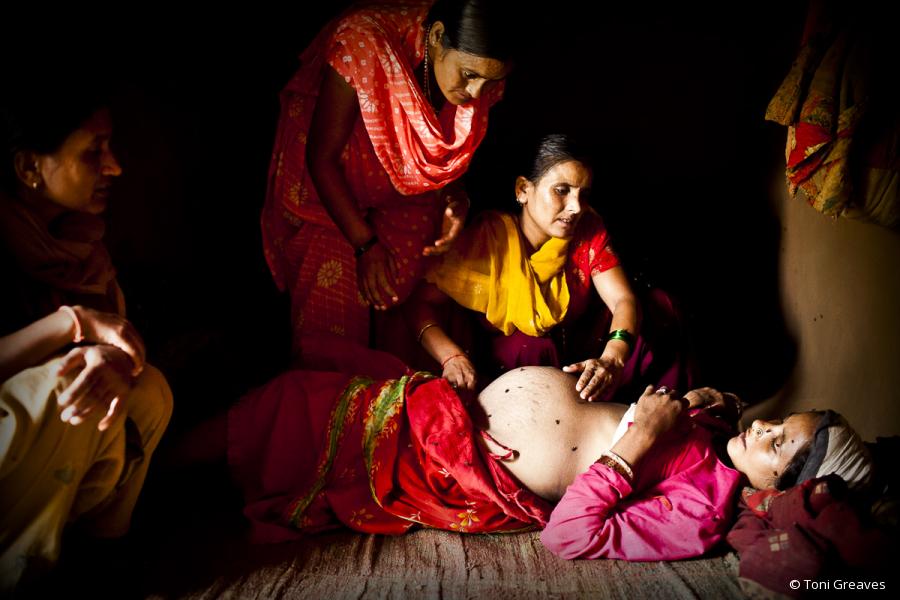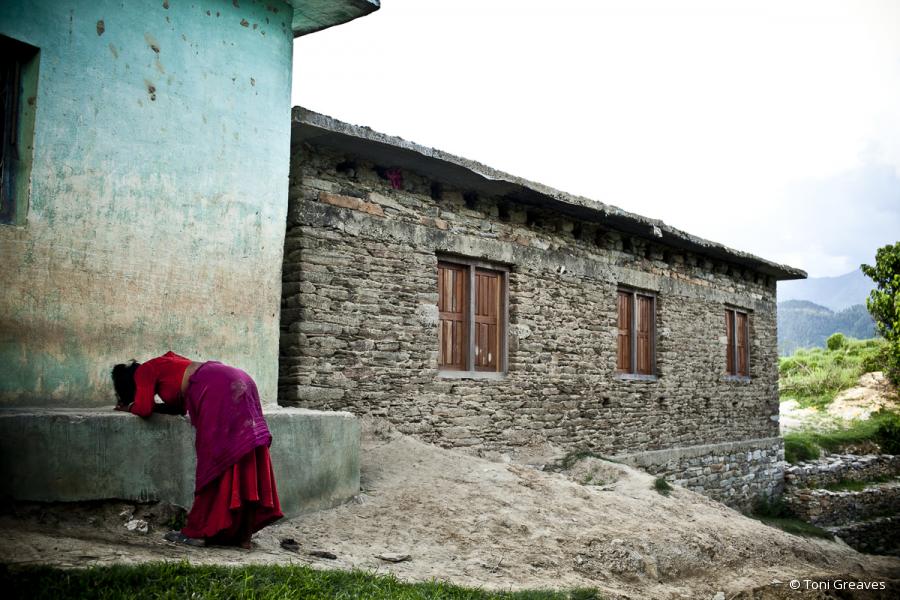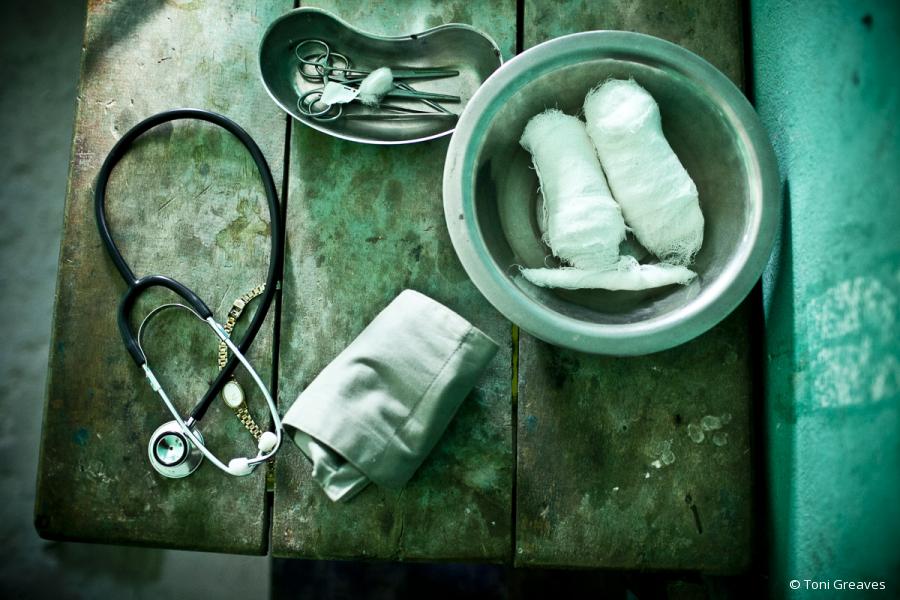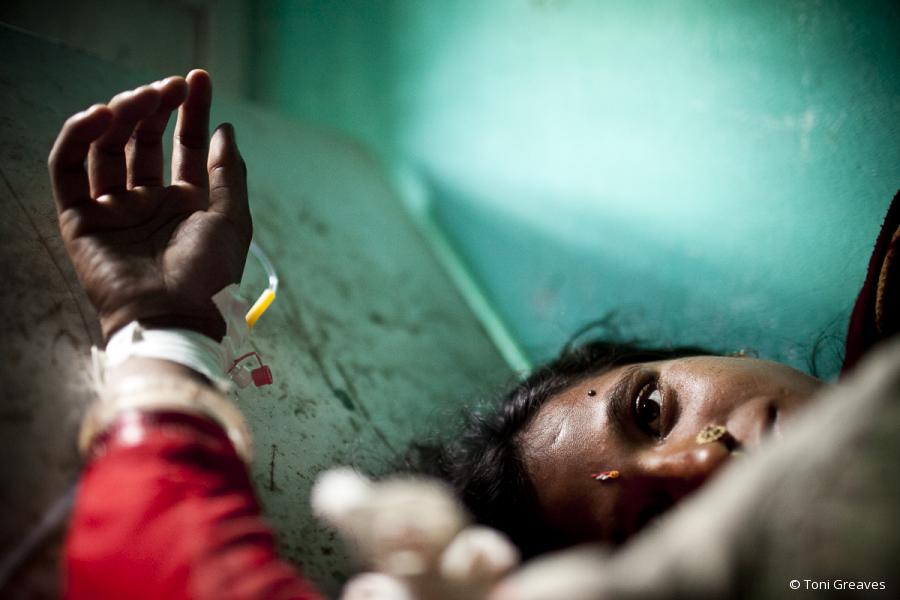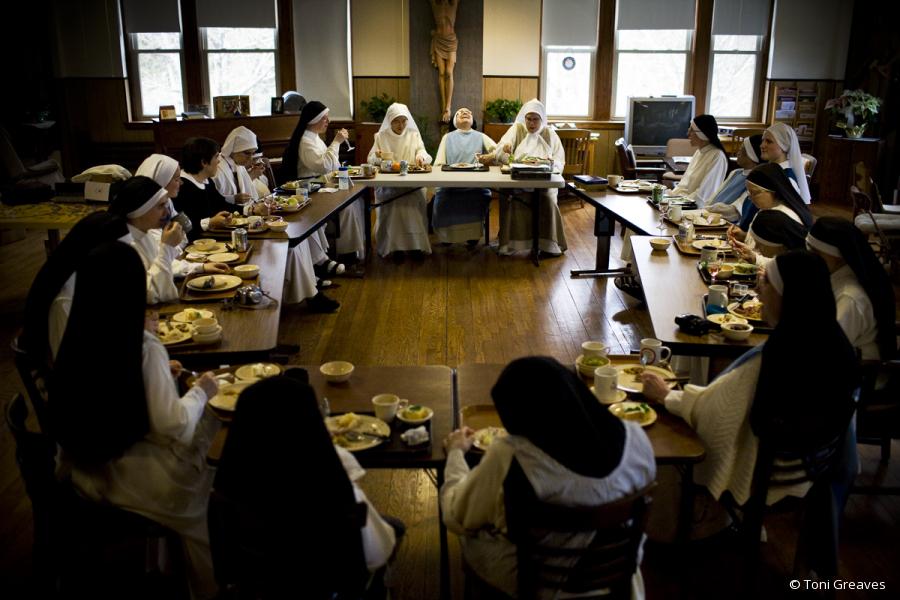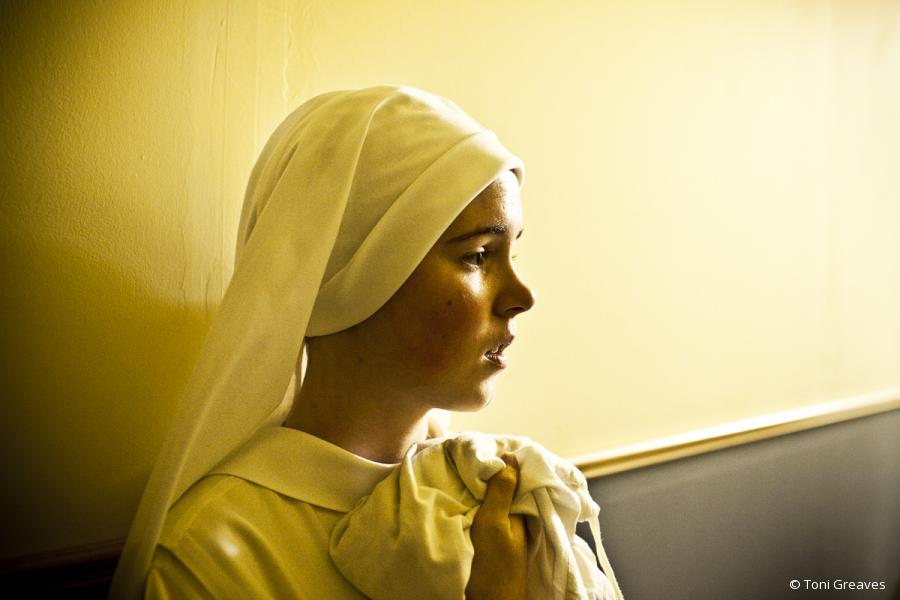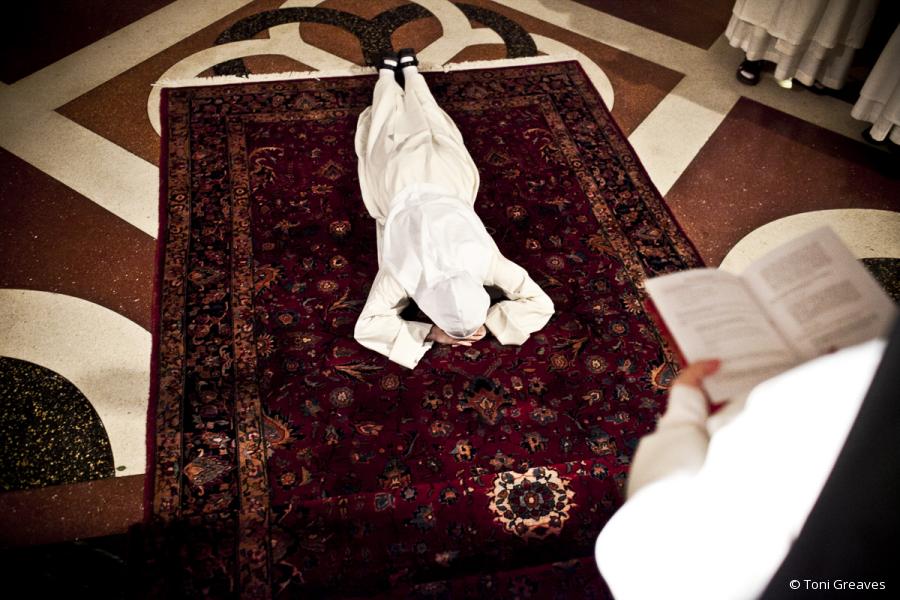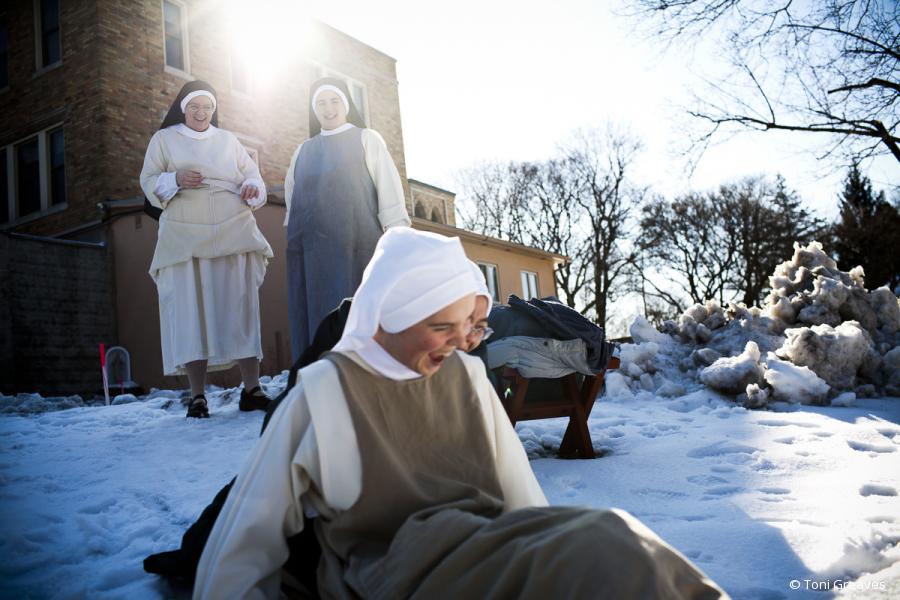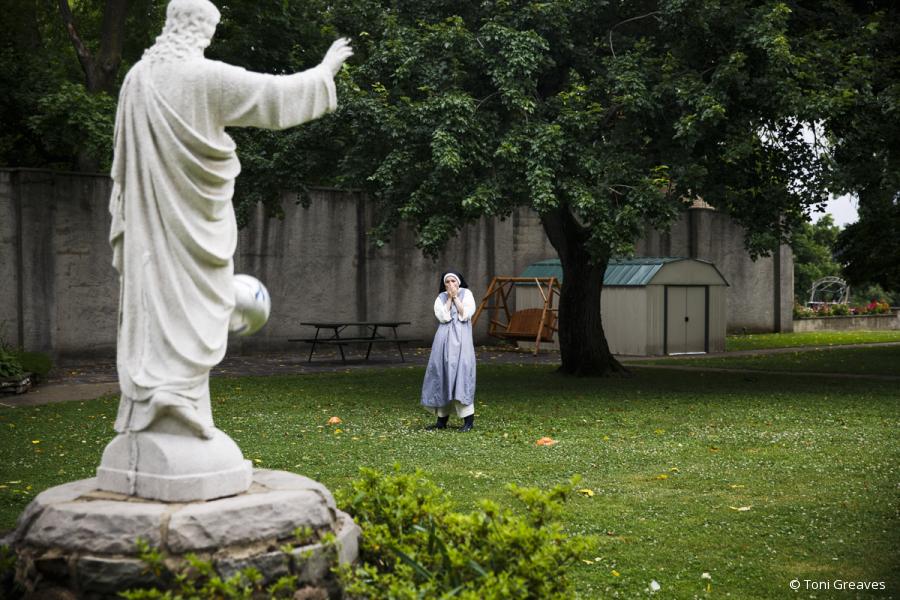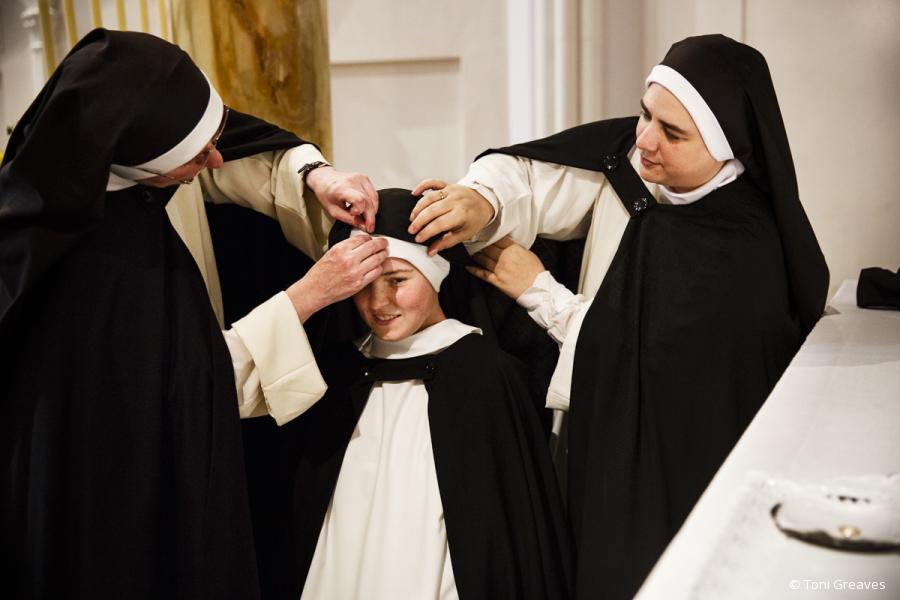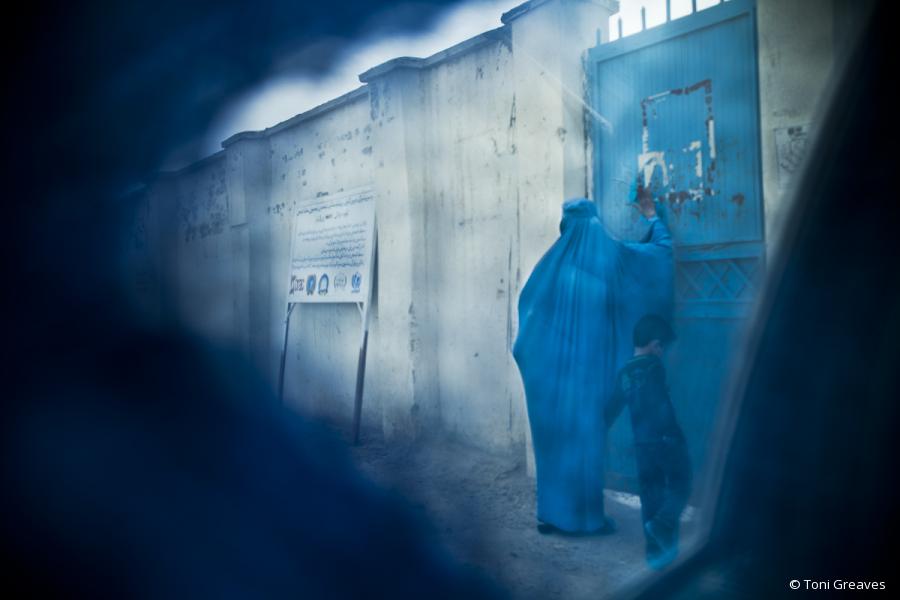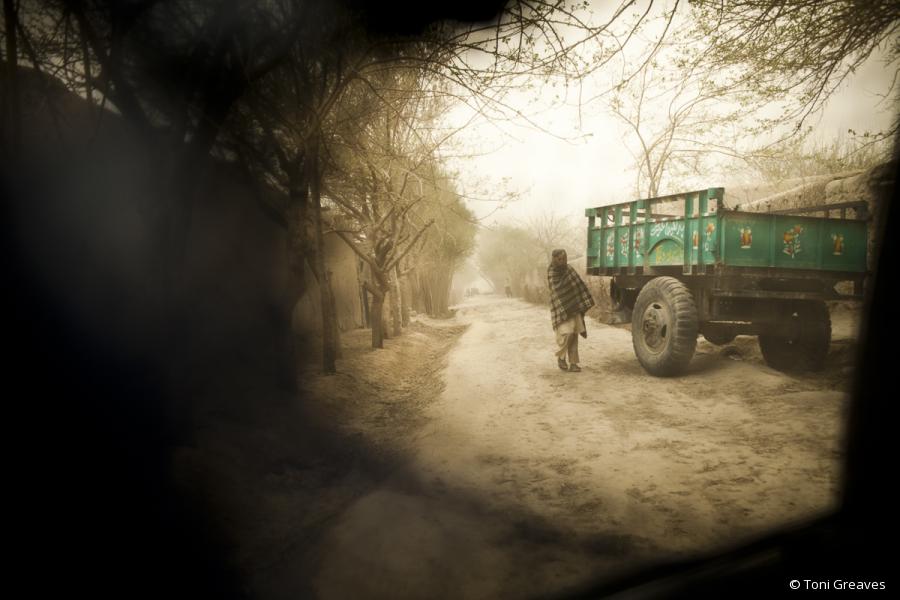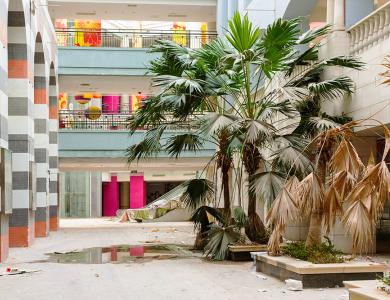Blink is a platform connecting thousands of media freelancers with publishers, brands and agencies who need high-quality content produced on location anywhere in the world.
Join the Blink network now
---
Toni Greaves has spent her life around visual arts, and storytelling in one form or another has been a fascinated thread throughout her work. With a passion for documentary photography, Greaves has traveled to tell stories from around the world. Recently, Blink’s Social Media News Editor Sahiba Chawdhary spoke to Greaves about her travels, various projects, and her latest seven-year photo book project, Radical Love, documenting the transformative journey of a young nun.
Sahiba: Tell us about yourself. What led you to pursue photojournalism?
Toni: Even before studying photojournalism, I was traveling to photograph stories of things in which I was interested. One such example is, over the course of two trips, spending nine weeks living with the Samburu tribe in northern Kenya. I got to know many people within the community, and then documented a rites of passage ceremony that happens just once every 15 years. It was a ceremony for the Samburu boys’ transition to becoming Moran, or Warrior. I was told at the time that I was the only woman to have photographed such an event.
Although now, when I look back on that work, I wish I were a better photographer at the time. It was this project that piqued my interest in photojournalism even further. Not long after my second trip to Kenya I was sitting at home on the two-year anniversary of my mother’s death, and I made the decision that day to go back to school and study documentary photography. I knew it was something that I loved greatly and, after the loss of my mother, I figured if we’re not at least trying to do what we love and want in life, what’s the point? So I enrolled in the Documentary Photography and Photojournalism program at the International Center of Photography, in New York City. That year of studying at the ICP was completely transformative for me. I graduated in 2008 and have been working in photography ever since then, and I continue to love it greatly.
Sahiba: Could you tell us about your latest book, Radical Love?
Toni: Radical Love represents seven years’ work photographing within a small cloistered monastic community in Summit, New Jersey. I started that project while I was living in New York City, and then after I moved back to the west coast I kept returning over the years to photograph daily life of the nuns, along with pivotal events. The book focuses on the journey of one young nun, Sister Lauren, and the various stages she takes to reach her final commitment to God. Along with life in the community, I have photographed each ceremony she’s been through in her journey; marker points that signify her increasing and final commitment.
Sahiba: Documentary photography requires time and commitment for one subject. What particularly drew you to this topic and your subject, Sister Lauren?
Toni: I was drawn to the topic after my mother’s death. It was a personal journey of sorts after that great loss, where I became increasingly curious about who and what we are in this world, and how we are connected to whatever lies beyond our physical being. This interest evolved into a fascination with dedicated spiritual communities. I felt that these enclaves, by their very nature, held the greatest potential for concentrated spiritual connection.
When I first visited the Monastery of Our Lady of The Rosary, Sister Lauren was the youngest and newest member of the community, having only been there for three weeks. So I got to see and photograph her from almost the beginning of her journey. This was really interesting, and of course works well for the story. She’s also a great example of the passage that most young nuns go through in their early years of cloistered monastic life. So although the story is focused on her, she represents her peers and the experience they all share.
Sahiba: What motivated you to pursue this project further and turn it into a book?
Toni: I had been working on the project for several years without thinking about a book. Many people had commented on the project's future as a book (even one of the older nuns would ask about that), but I wasn’t really thinking that far ahead. I was just interested in making the work and documenting Sister Lauren's journey. It was around four years into the project that I considered turning it into a book, and then met with some publishers (who I had researched extensively, thinking they may be a fit for the work). Chronicle Books was one of them, and I was thrilled that they were interested in the project. It was a lengthy process from that meeting to the final publication, and during that time I continued to shoot. Ultimately the book embodies seven years’ work, which I am really happy about, and glad that I didn’t produce a book earlier.
As for it being a book, it just seems like a natural progression for a long-term project like this. There’s permanence to the work being in book format. As an aside, not long after its publication I managed to give the book to Pope Francis, when he was visiting New York. That copy now lives within the Pope’s private room in New York City, so will be seen by any future Pope who stays there. Books have perpetuity to them, and as a photographer friend astutely mentioned around that time, that copy of my book (and most other copies), will outlive each of us. That’s pretty extraordinary to think about.
Sahiba: I'd imagine access would have been tricky to pursue this project. Did you face any similar or other difficulties while pursuing this project? If yes, how did you tackle them?
Toni: I established a very good relationship with the nuns quite early on in this project. It’s like that with all the work I do, and I do that very quickly. I put the people I’m photographing before myself, or my work, so there’s a strong level of trust that I tend to build. People know that I would never betray them. This comes from a very sincere and genuine place of me caring about them. But I suppose an outcome of this is that the depth of trust I build also helps with the access I’m granted. I don’t do it for that reason though; I do it because I truly and genuinely care.
Sahiba: I was really moved by your project about maternity in Nepal. Could you describe the project and what motivated you to pursue it?
Toni: That project was a commission for the Bill & Melinda Gates Foundation. I was very excited to receive that assignment, as I have an ongoing interest in the culture and people of the Himalayan regions of northern India and Nepal. Combining that with my interest in the topics of health, healing, and women’s issues, the assignment was a great fit for me. This project was one of the three times where I’ve photographed birth, each situation being very different. For this project in Nepal though, it was both heartbreaking and exciting.
Our goal was to document and photograph a young woman through the final days before her giving birth. Of course, we couldn’t predict exactly when that would happen, so I was photographing the stories of several young women in the days leading up to their expected delivery dates. Throughout this process, I photographed and spoke with many other young Nepali women who had been through childbirth (although giving birth at age 14, 15, 16, they’re still girls, really).
Many of them had been through quite traumatizing ordeals while in labor and, in many cases, the loss of their child in the process. The devastation was visible in their faces, and my heart ached for what they’ve been though, and so young, too. Nepal has one of the highest infant and maternal mortality rates in the world. All of this is the reason for the Gates Foundation’s program to help educate a range of women in the region, so that they can help other women during the birthing process. This is an extremely impactful program, especially considering that in many of these areas a midwife or skilled birth attendant is not even available.
On the positive side, Maheshwori, age 19, managed to have a healthy delivery. This was quite a different experience than when she gave birth to her first daughter, at age 16, where she nearly died in the process. I was able to photograph her delivering her second child; a baby girl named Seema, who came into the world bright and healthy.
Sahiba: Similarly, while going through your personal projects, I stumbled upon, ‘Traveling By Burqa’, could you tell me what made you come up with this theme-based project? Please throw some light upon how where and how it was shot?
Toni: I shot that series as a personal side project while on assignment in Afghanistan for Mercy Corps. I was in Afghanistan to document Mercy Corps' educational programs in Helmand Province. My assignment was primarily about their wonderful programs for women and girls, but I also documented some of their men's and boys programs. I was shooting still images and capturing audio interviews and other sound, which ultimately became a multimedia piece, along with helping Mercy Corps build an image library of these programs.
While in Afghanistan, I dressed according to traditional customs and wore a hijab. Also though, for reasons of security along with cultural norms, anytime I was outside of Mercy Corps' educational compounds I needed to wear a burqa. This was really just while I was in a vehicle traveling from place-to-place as, again for reasons of security, I wasn't able to walk around outside of the enclosed compounds.
Despite the restrictive nature of the garment, I found it endlessly fascinating seeing that way, through a burqa, as it offered an experience and view of the world that so many women in Afghanistan live day-to-day. I was spending a lot of time in a vehicle, traveling and watching the world this way, and so I decided to make a project out of it and to photograph through the burqa. So that's really how this series evolved. It was created during the many hours of travel time in-between my assignment work.
I see this essay as a kind of visual poetry of my travel experience there. For all the complexity and difficulties of life in Afghanistan, it remains one of the most interesting places I've ever experienced, and the people I met there were truly wonderful.
Sahiba: What advice do you have for young freelancers trying to break in?
Toni: Well, the first thing that comes to mind is to be independently wealthy (ha!), or to have an alternate source of income. I think there’s sometimes an illusion within the industry of the way that people are “making it”. There are photojournalists I admire, and it took me a long time to figure out that often they have an alternate source of income, or else they are struggling. That’s not unusual, it’s like that in most of the arts. Personally, I do commercial work as well as photojournalism, and that’s how I’ve kept things going. Other than the financial aspect, I think the best advice I could give would be two things:
Love: I’d say to only pursue this career path if you love it greatly. It’s extremely challenging making your way in photojournalism today (see financial, above). So ultimately the only thing that will really keep you going is if you love the work itself, along with the projects you’re working on. Without great passion for this sort of work, I think it’s difficult to succeed in the longer term. A personality trait of unwavering tenacity is what I see in most successful photojournalists. I think it’s important to be inspired by and embody that kind of fortitude.
Skill: There’s a quote by Steve Martin that I always think of when people ask this question and it’s just as applicable to photography and the creative arts as it is to the entertainment industry:
“Be undeniably good. When people ask me how do you make it in show business or whatever, what I always tell them and nobody ever takes note of it ‘cause it’s not the answer they wanted to hear —what they want to hear is here’s how you get an agent, here’s how you write a script, here’s how you do this— but I always say, ‘Be so good they can’t ignore you.’ ” -- Steve Martin
Sahiba: Congratulations on the success of your book. Could you tell us a little about the difficulties you faced while editing and producing it? Also, what in your opinion is the best advice for photographers trying to publish their personal projects and make it a success?
Toni: The most difficult thing in the book-making process was definitely the photo editing.
My book process was slightly different than is often the case in photo book publishing, in that I had a “mechanicals deal” with Chronicle. This means I was working with an independent book designer outside of Chronicle, and would turn over final production-ready files (mechanicals) for printing. Chronicle had to approve the work, of course (and they were wonderful about this), but basically I chose to lead the direction and production of the book.
Originally I was collaborating with the book designer on the photo edit. We had spent a lot of time editing together, but then things were put aside for a while as the book publish date was pushed out a year (for very good reasons, and I’m glad that happened). When I later returned to the edit after having some space from it, my first thought was... “Oh, damn, this edit is terrible!”. I realized the edit didn’t represent my best work or the overarching story. I had a bit of a panic about this (okay, that’s an understatement), as at this point deadlines were starting to creep up again. I decided even with the looming deadlines that the edit needed to be started again.
So I reached out to a few trusted friends and mentors, all of who work in the photo industry, and who are each experts in their own right in the art of photo storytelling. I sought their advice and began a process of re-editing the book in collaboration, to varying degrees, with each of them. I’d sort of assess things and bounce back and forth, asking their opinions, weighing various input, and then move forward from there. I do believe I became a much better editor of my own work as a result of this process.
As for publishing personal projects, I would say to honestly assess whether a project is ready to be a book. I’ve noticed that sometimes there's not an accurate assessment of this. The question to ask is: “Is there enough work, and does the project go deep enough?” That can be a hard thing to figure out for yourself, when being attached to a project. My advice is to reach out to others in the industry (those who will be honest with you) and ask what they think. If the work isn’t ready, that's no big deal, just keep working on the project and take it as far as you can.
Sahiba: Lastly, so what is next for you? Are you working on any new projects? Please tell us about them.
Toni: There are a number of projects I’m working on, but I have two other major long-term projects; both began in 2009, which I’ve been plucking away at in the background of everything else over the years. One is about a community and family in northern India, and it relates to a spiritual topic. The other I’m not sure that I’m ready to talk about publicly as yet, but it relates to a way that people find connection, to themselves and others. I’m aiming to bring one of these projects to the forefront over the coming years. So, stay tuned. Perhaps that will also be my next book.
Visit Toni Greaves’ online portfolio here
You can buy her book, Radical Love, here

